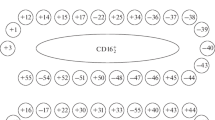Abstract
Brazilian immunology dates from the end of the 19th century. The aim of the present paperwas to analyze the impact of this field in contemporary Brazilian biomedical research. For this, a15 years period (1981-1995) was studied. Production of immunological articles in Brazilrepresented in 1995 a percentage of 8.66 of total papers in biomedical sciences in this country.This level was achieved by an exponential increase in 1991 in the number of papers inimmunology followed by a steady increase in the subsequent years. This growth was onlyobserved in articles published in international immunology journals listed by ISI, a similarincrease did not occur when the most representative Brazilian journal in biomedical sciences wasanalyzed. The production in immunology in the last five years (1991-1995) represented 60.69% oftotal articles in this field published in the whole 15 years period. When quality was assessed basedon impact factor of the journals were the articles appeared, 52.71% of total immunology papershad been published in journals with impact factors varying between 7.29 and 3.24. A higherdegree of international co-authorship was seen both in articles published in international journalsand presentations at international congresses compared to national ones. The main countriescollaborating with Brazil were: EUA, England and France. Within Brazil, immunology researchwas not equally distributed. Around 80% of the articles were produced by four states (São Paulo,Rio de Janeiro, Minas Gerais and Bahia), São Paulo being responsible for more than half of thosearticles. This geographic distribution closely resembles the distribution of the Brazilian Society ofImmunology (SBI) membership. The main field of study throughout the period wasimmunoparasitology.
Similar content being viewed by others
References
De Meis, L; Leta, J. (1996), O perfil da Ciência Brasileira, Ed. UFRJ. Rio de Janeiro. Brasil, pp. 1-103.
Sociedade Brasileira de Imunologia (SBI). Memberships in 1999. INTERNET via Home Page http://www.sbi.org.br/. Consulted in 1999.
Conselho Nacional de Desenvolvimento Científico e Tecnológico (CNPq). Directory of scientists with productive grants in the CNPq and Curriculum Lattes (of the scientists). INTERNET via Home Page http://www.prossiga.cnpq.br/. Consulted in 1999 e 2000.
Academia Brasileira de Ciências (ABC). INTERNET via Home Page http://www.abc.org.br/. Consulted in 2000.
Lewison, G.; Fawcett-Jous, A.; Kessler, C. (1993), Latin American output (1986–1991) and international co-authorship patterns, Scientometrics, 27: 317-336.
Rumjanek, V. M.; Leta, J. (1996), An evaluation of Immunology in Brazil (1981–1993), Brazilian Journal of Medical and Biological Research, 29: 923-931.
Godin, B.; Ippersiel, M. P. (1996), Scientific collaboration at the regional level: the case of a small country, Scientometrics, 36: 59-68.
Leta, J.; Demeis, L. (1996), A profile of science in Brasil, Scientometrics, 35: 33-44.
Rodrigues, P. S.; Fonseca, L.; Chaimovich, H. (2000), Mapping cancer, cardiovascular and malaria research in Brazil, Brazilian Journal of Medical and Biological Research, 33: 853-867.
Author information
Authors and Affiliations
Rights and permissions
About this article
Cite this article
Dos Santos, N.F., Rumjanek, V.M. Brazilian immunology: One hundred years later. Scientometrics 50, 405–418 (2001). https://doi.org/10.1023/A:1010502513971
Issue Date:
DOI: https://doi.org/10.1023/A:1010502513971




